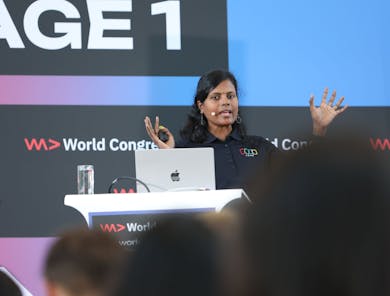If you’re a developer building mobile messaging flows—whether it’s for sending appointment reminders, delivery updates, or guiding users through customer support—rich messaging channels like WhatsApp Business and RCS Business Messaging offer powerful upgrades over plain SMS. These channels let you send interactive, branded messages that don’t just notify users, but engage them with buttons, media, and structured replies.
While WhatsApp and RCS are built on different tech stacks, they solve many of the same problems—and share more in common than you might expect. If you’re a developer or product builder trying to choose the right channel—or just curious how they compare—this guide will break it down.
What WhatsApp and RCS Have in Common
Let’s start with the overlap. WhatsApp and RCS both offer:
- Verified sender profiles: Instead of a random number or text ID, users see your brand name, logo, and verified business info in the contact profile.
- Rich media support: You can send images, videos, documents, carousels, and buttons.
- Read receipts and delivery tracking: Unlike SMS, you get clear signals about when a message was delivered and whether it was read.
- Template-based outbound messaging: For messages that start a new conversation (such as appointment reminders or transactional alerts), businesses use pre-approved templates to ensure quality and avoid spam.
Even when it comes to interactive elements—buttons, quick replies, carousels—the differences are subtle. Both channels support modern UI elements that guide the user through key actions with minimal typing required.
Where the Two Channels Differ
WhatsApp and RCS are similar in how they support branding and interactivity, but they diverge in setup and reach. WhatsApp requires just one global business verification, while RCS must be verified country by country with local carriers. In terms of availability, WhatsApp depends on users having the app installed, whereas RCS runs natively on many Android and now iOS devices. And while fallback to SMS isn’t built into either channel, platforms like Twilio handle this automatically—ensuring delivery even when a user’s device doesn’t support the original channel.

The same message template sent via WhatsApp (left) and RCS (right)
Is there an API for that?
Channels like RCS and WhatsApp are powerful—but managing them individually is time-consuming and complex. That’s where a customer engagement platform like Twilio comes in.
Twilio offers a unified interface for sending SMS, WhatsApp, RCS, and more—all through a single API and template system. You define your message once, and Twilio handles the logic of where and how it gets delivered. Whether it’s fallback, localization, message logging, or compliance—Twilio abstracts the complexity so you can focus on the customer experience.
Developer Experience: One API, Many Channels
Despite the differences behind the scenes, the experience of sending a message through either channel is remarkably similar for developers.
If you’re already sending SMS via Twilio, switching to RCS or WhatsApp involves virtually no code change. You’ll use the same messaging API, same message templates, and same delivery logic—just with a different recipient prefix. Here’s what that looks like:
client.messages.create({
body: "Your order has shipped!",
to: "+123456789", // SMS by default
// to: "whatsapp:+123456789", // Send via WhatsApp
// to: "rcs:+123456789", // Send via RCS
messagingServiceSid: "<YOUR_MESSAGING_SERVICE_SID>",
});
The heavy lifting is all in the sender setup. WhatsApp requires Meta verification and template approval. RCS requires registration with each carrier where you plan to send messages. Once that’s done, you can use the same templates across SMS, WhatsApp, and RCS — unified on the Twilio platform.
Ready to try it out? Sign up for a Twilio account and start sending rich messages with a few lines of code.
Choosing the Right Fit
Deciding between WhatsApp and RCS mostly comes down to one question: where do your customers want to be reached?
WhatsApp is ideal in regions where the app dominates daily communication, and it offers a centralized setup for global reach. RCS, on the other hand, works right inside the default messaging app—no install required—but setup can vary by country due to local carrier registration.
Other factors like device support, cost, and user habits matter too—but with the right platform, you can let customers choose their preferred channel without complicating your codebase.
Final Thoughts
Rich messaging is no longer a future trend—it’s the current standard. WhatsApp and RCS give businesses a way to be present, personal, and trusted inside the world’s most-used apps.
The great news for developers? You don’t have to pick one. With tools that abstract away the channel differences, you can reach your users where they are today—and be ready for where they’ll be tomorrow.













